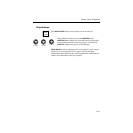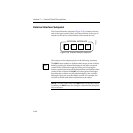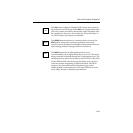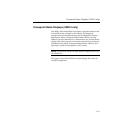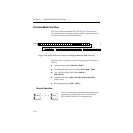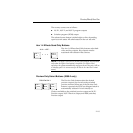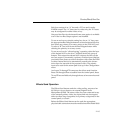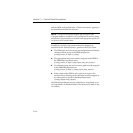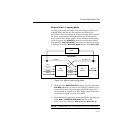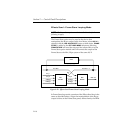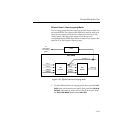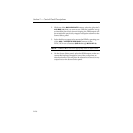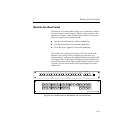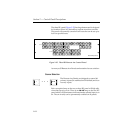
2-115
Preview/Mask/Aux Bus
Each bus consists of an “A” bus and a “B” bus and is under
E-MEM control. The “A” buses are for video only; the “B” buses
may be configured for either video or key.
Output of Aux Bus 4 to the internal frame store option is available
even if the Aux Bus Output option is not installed.
To use an aux bus as a simple routing bus: for an “A” bus, press
the appropriate Bus Delegate button to select the desired aux bus,
then select any primary or re-entry source on the PVW AUX row.
To select a “B” bus, hold down the Bus Delegate button while
selecting the primary or re-entry source.
To use an aux bus for “effects looping” operation, select the layer
of the desired M/E on the Aux 1-4 Effects Send Only group of
buttons. This causes the selected M/E output to be sent out the
aux bus output. Concurrently, a primary switcher input (that has
previously been chosen to receive the return video from the DPM
or other external device) is automatically routed to the chosen
mixer layer for insertion of the processed video. The primary
input to be used for the return path is set up in the Configuration
menu.
Aux buses 5A through 7B cannot use the effects send function.
Buses 5A through 6B are accessible from the control panel; buses
7A and 7B are available only through the use of an external control
panel.
Effects Send Operation
The Effects Send feature sends the video and key outputs of an
M/E Keyer via aux buses to an external Digital Picture
Manipulator (DPM). The return video/keys are connected to any
of the external primary video/key inputs and may be mapped
either to effects loop crosspoints or to primary crosspoints on the
control panel, or to both.
Before the Effects Send feature can be used, the appropriate
physical cable connections must be made between the Model 3000



